Ever walked into a beautifully decorated living room that somehow felt… incomplete? Often, the missing piece isn’t another throw pillow or plant – it’s the perfect wall clock positioned in just the right spot. Understanding where to hang a wall clock in a living room setting can be the difference between a space that feels professionally designed and one that seems to be missing something essential.
This is a dilemma for many homeowners. The clock has been in storage, being discussed in terms of location, or worse, it has been assigned a random place to exist that adds no value to the aesthetic of the room. The fact is, when positioned correctly, a wall clock not only tells time, it also serves as the punctuation mark that will connect your entire design story.
Why Does Clock Placement Make or Break Your Room’s Design?
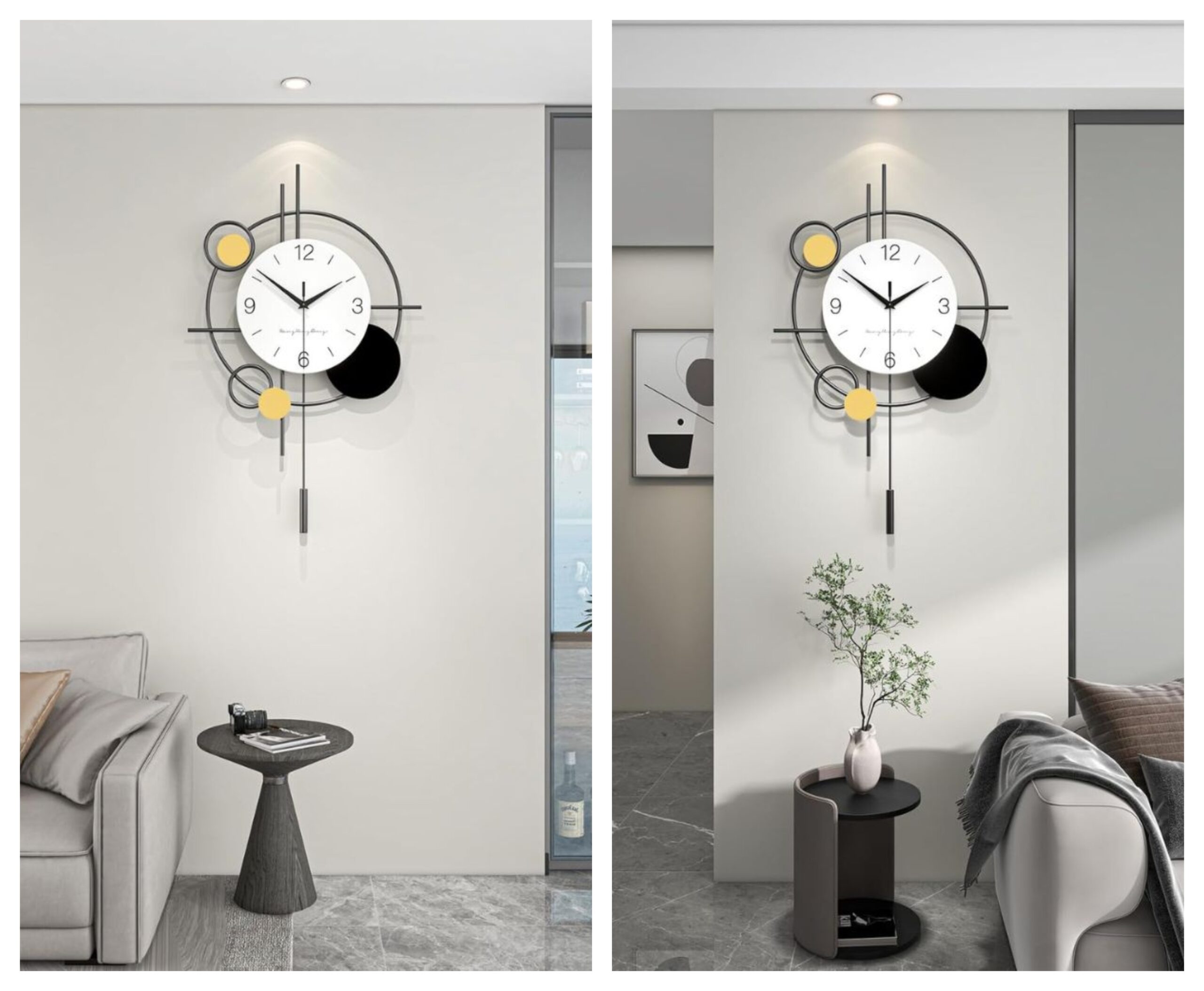
When considering where to hang wall clock in living room, think of your timepiece as more than functional decor. It’s a design anchor that can either elevate your space to magazine-worthy status or leave it feeling oddly unfinished.
Think of this typical situation with two identical rooms, the same furniture, color, and accessories. In one room, the wall clock is hung awkwardly high in a corner, where no one can see it. In the other room, the clock is hung as an amazing focal point above the sofa. With such a slight adjustment, the visual impact is astounding, and the second room feels like it has been designed with intention and completeness.
The secret lies in understanding that clocks serve dual purposes. They provide practical function while acting as sculptural art pieces that draw the eye and create visual interest throughout the space.
What Are the Prime Real Estate Locations for Your Wall Clock?
The Sofa Wall: Your Golden Opportunity
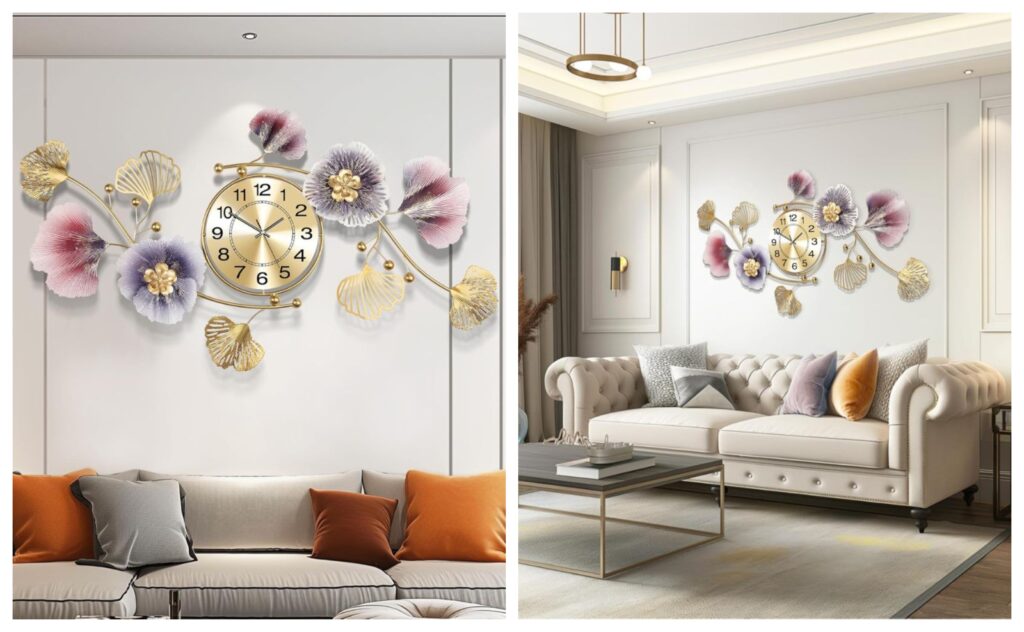
The wall above your sofa consistently ranks as the top choice when determining where to hang wall clock in living room environments. This prime location creates an instant focal point that feels both natural and intentional.
Picture this arrangement: guests enter your room, and their eyes immediately travel to this central wall where your beautiful timepiece commands attention without competing with other elements. The key lies in positioning – place your clock 6-8 inches above the sofa’s backrest for that professional, balanced look interior designers charge hundreds to achieve.
This location functions because it respects the natural sight lines that people use once they are settled into the seating area. The clock becomes part of the gathering space while being easily seen from several angles throughout the room.
The Entrance Wall: First Impressions Matter
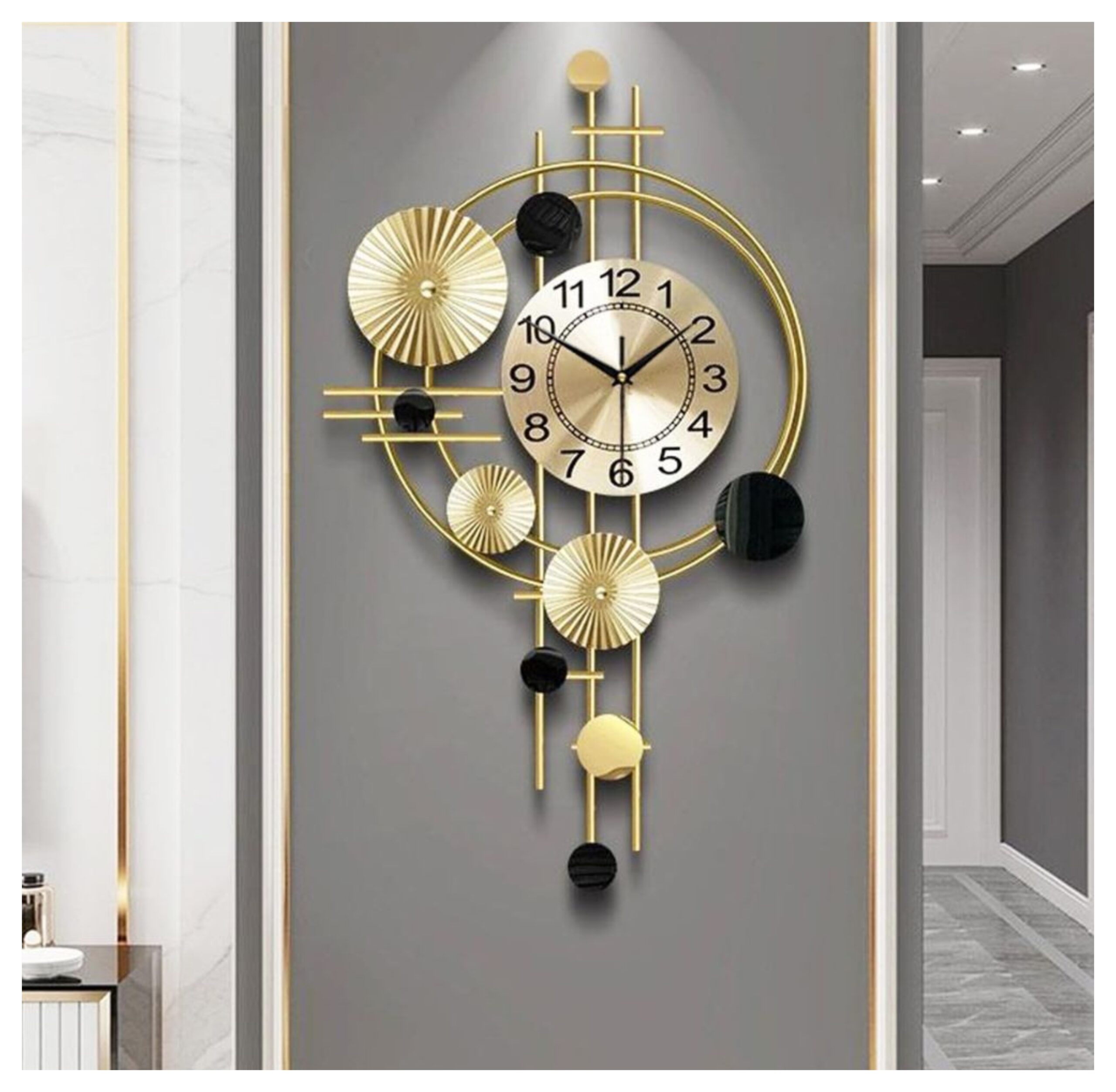
Positioning your wall clock on the wall opposite the main entrance creates an immediate wow factor. Think of it as your room’s welcoming committee – the first thing visitors notice when they step inside.
The idea of strategically placing the clock is particularly effective in open-concept houses where the clock can be viewed from a variety of locations. It functions like a piece of art and also keeps everyone on schedule for dinner reservations.
How Does Your Room Size Influence the Perfect Placement?
Small Spaces: Making Every Square Inch Count
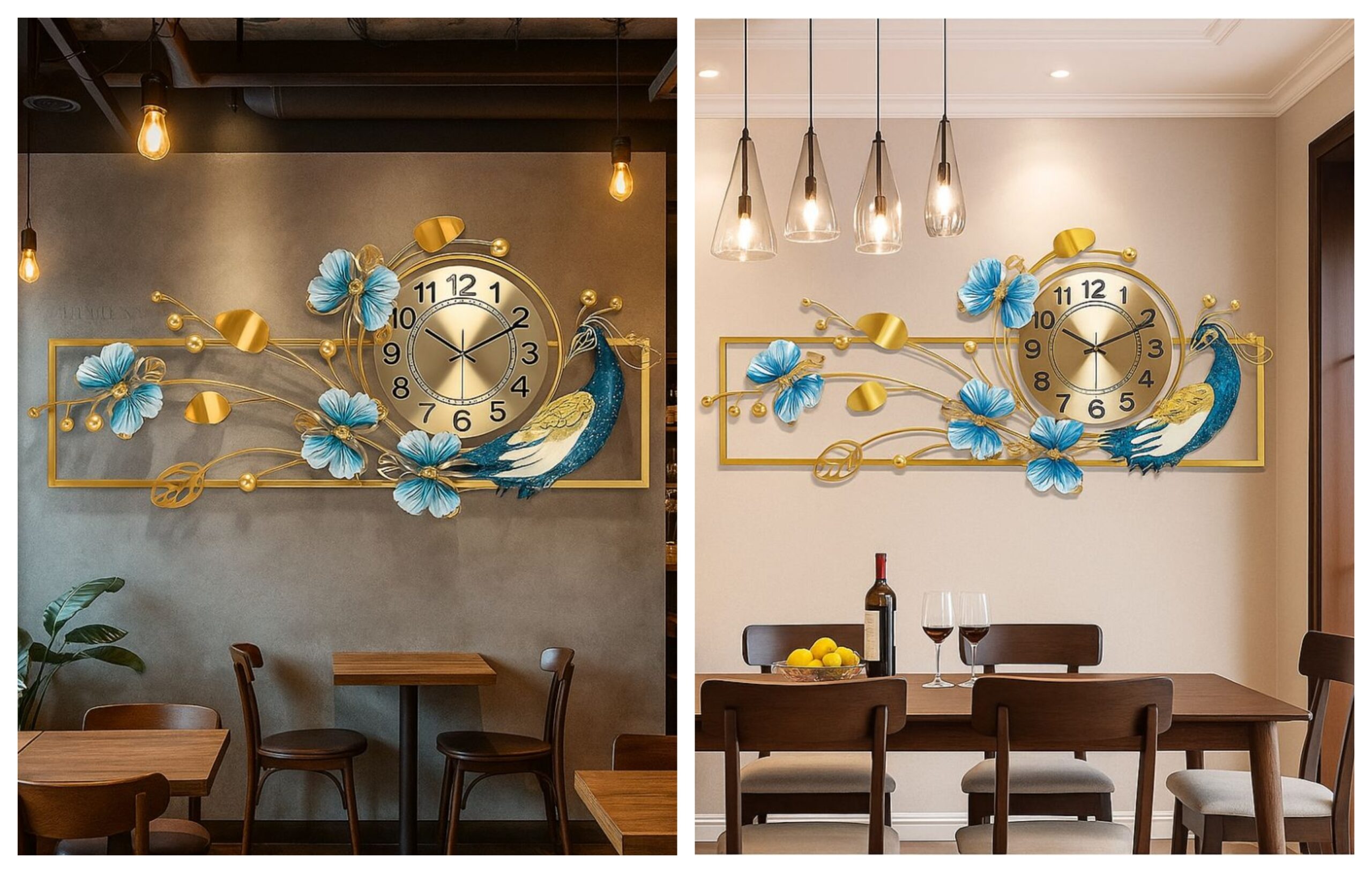
Compact rooms require clever strategies when deciding where to hang wall clock in living room areas. The challenge isn’t just finding wall space – it’s making sure your timepiece enhances rather than overwhelms the cozy environment.
Here’s a designer secret: above a narrow console table creates the illusion of height while adding functional beauty. This layered approach transforms a simple furniture piece into a curated vignette that looks intentionally styled.
Corner placement offers another brilliant solution for tight spaces. That awkward corner where nothing seems to fit? Perfect for a statement clock that adds personality while utilizing previously wasted space. It’s like discovering hidden square footage in your own home.
Wall-mounted floating shelves with integrated clock display maximize both storage and style. These arrangements combine books, decorative objects, and your timepiece in cohesive compositions that make small rooms feel more spacious and organized.
Consider the vertical space between windows or doorways – these narrow strips often get overlooked but can accommodate smaller clocks that add character without cluttering. It’s amazing how these small touches can make a room feel more polished and complete.
Large Rooms: Multiple Opportunities for Impact
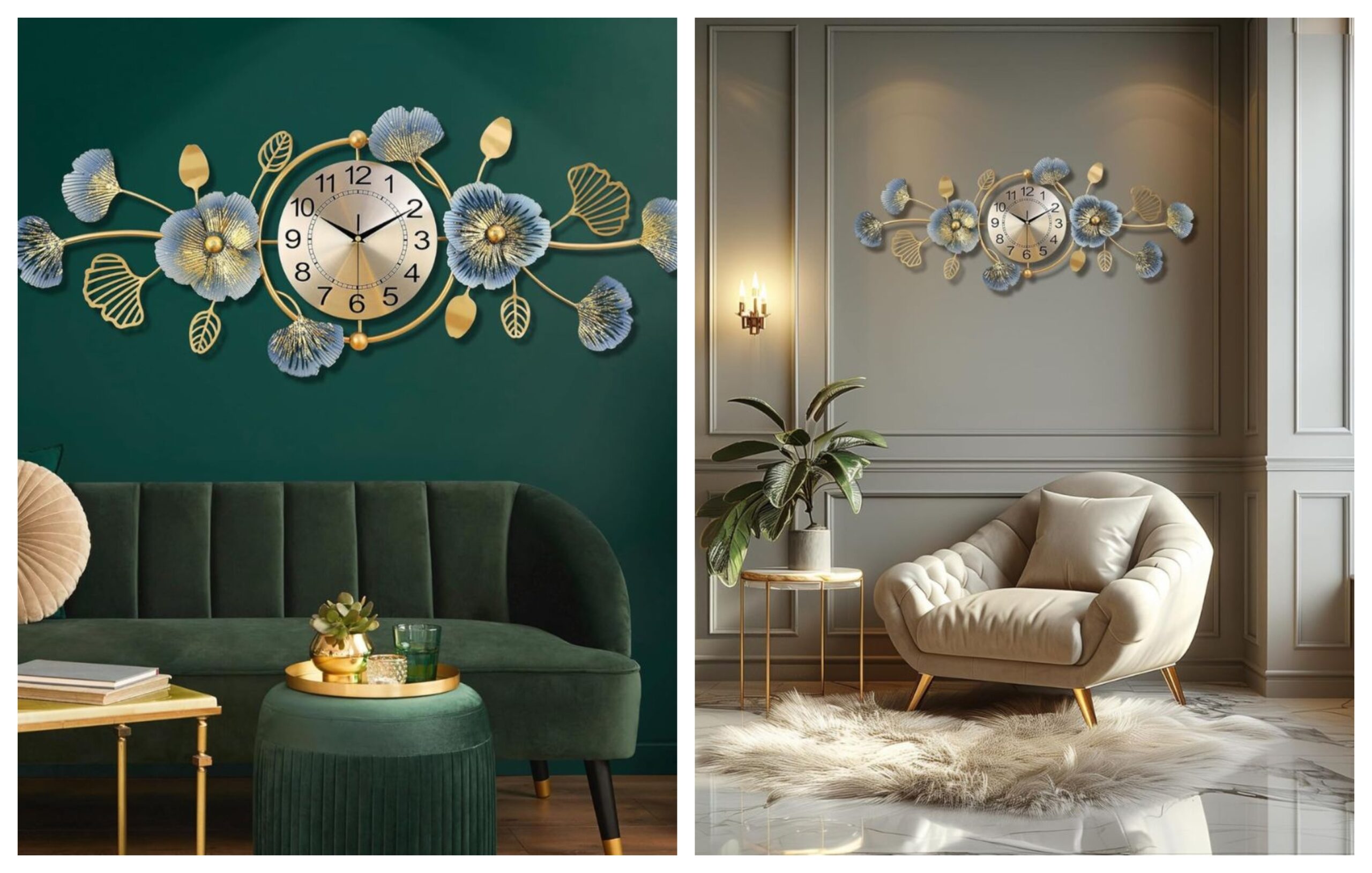
Spacious areas offer exciting possibilities when determining where to hang wall clock in living room settings. These environments can support larger statement pieces or even multiple clocks that create visual rhythm throughout the space.
Imagine a grand accent wall featuring an oversized clock as the starring element – it becomes sculptural art that anchors the entire room’s design. This approach works especially well with high ceilings where proportion matters more than ever.
Multiple timepieces strategically positioned create what designers call “visual rhythm” – a sense of flow that guides the eye around the room. Think of one primary clock in the main seating area, with smaller accent pieces in reading nooks or conversation zones.
Gallery wall configurations that include clocks and/or functional timepieces combined with art develop a dynamic composition that represents a narrative about personal style and taste. These thoughtfully designed displays change entire walls from ‘just a wall’ to a focal point displaying a collection, and this is achieved while providing the time of day.
What’s the Science Behind Perfect Clock Height?

The 57-60 Inch Rule Explained
Professional designers swear by positioning wall clocks 57-60 inches from the floor to the center – but why this specific measurement? It’s based on average eye level for both seated and standing positions, ensuring comfortable viewing regardless of how people are positioned in the room.
Here’s the interesting part: this rule applies to artwork as well, which explains why properly hung clocks feel so naturally integrated into well-designed spaces. It’s like tapping into the visual psychology that makes rooms feel balanced and comfortable.
Ceiling height can modify this guideline slightly. Rooms with soaring 10-foot ceilings can accommodate slightly higher placement, while standard 8-foot heights work best with traditional positioning. The goal is to maintain a proper proportion between the clock, ceiling, and surrounding elements.
Size and Proportion Considerations
The clock’s dimensions significantly impact optimal hanging height. Larger timepieces may need lower positioning to prevent them from floating awkwardly near the ceiling, while smaller clocks can be hung higher without losing visual impact.
Consider the furniture relationship too. Higher-backed sofas or tall bookcases influence placement decisions because the clock needs to relate harmoniously to these substantial pieces rather than competing with them.
How Do Lighting Conditions Affect Your Clock Placement Strategy?
Working with Natural Light Patterns
Window placement and seasonal light changes significantly impact where to hang wall clock in living room environments. Nobody wants to squint through glare to check the time, especially during those golden hour moments when natural light streams through windows.
East-facing walls receive intense morning sun, while west-facing surfaces get hit with afternoon glare. Understanding your room’s light patterns throughout the day helps avoid placement mistakes that make clocks difficult to read when needed most.
Artificial Lighting Integration
Evening lighting schemes transform how clocks appear in your space. Table lamps, floor lamps, and overhead fixtures all contribute to the timepiece’s visibility and aesthetic appeal after dark.
Strategic accent lighting can elevate wall clocks from functional items to dramatic focal points. Picture your beautiful timepiece subtly illuminated by carefully positioned spotlights – it becomes an evening artwork that complements its daytime functionality.
What Ancient Wisdom Says About Clock Placement
Feng Shui Principles for Modern Homes
Ancient feng shui wisdom offers fascinating insights for determining where to hang wall clock in living room spaces based on energy flow concepts. These time-tested principles suggest that clocks should face inward toward the home’s heart rather than pointing toward exits or doorways.
The reasoning makes intuitive sense: clocks pointing toward exits might symbolically encourage time (and positive energy) to leave the home. Conversely, inward-facing timepieces help contain and circulate beneficial chi throughout living spaces.
The east and southeast walls are considered most auspicious for clock placement according to traditional practices. These directions align with growth and prosperity energies, supposedly promoting positive life changes and abundance for household occupants.
Energy Flow and Comfort Considerations
Feng shui practitioners advise against positioning clocks directly above seating areas where people spend extended periods. The constant ticking presence overhead can create subconscious pressure or restlessness that disrupts the room’s peaceful energy.
Think about it from a psychological perspective: having time constantly looming overhead might make relaxation more difficult, even if the effect operates below conscious awareness. This principle aligns with the modern understanding of environmental psychology and stress factors.
Clock size and ticking volume also influence energy balance according to these ancient principles. Oversized timepieces in small spaces or multiple loud ticking sounds can create sensory overwhelm that affects room occupants’ comfort levels and well-being.
Balance and harmony remain the core concepts – clocks should enhance rather than dominate their environment. The ideal timepiece adds functional beauty without drawing excessive attention or creating a distraction from the room’s primary purposes.
Integrating Traditional Wisdom with Modern Design
Contemporary homes can benefit from feng shui principles without sacrificing style or functionality. The key lies in understanding the reasoning behind traditional guidelines and adapting them to modern living situations.
For instance, the preference for east-facing placement often coincides with natural lighting patterns that make clocks more visible during morning hours when time awareness matters most for busy schedules.
Which Design Styles Influence Optimal Placement Strategies?
Modern Minimalist Approaches
Contemporary design aesthetics favor clean lines and uncluttered presentations when determining where to hang wall clock in living room settings. Sleek timepieces work best in generous wall spaces that emphasize their geometric beauty and sophisticated simplicity.
Gallery walls with carefully curated spacing showcase modern clocks alongside complementary artwork without creating visual competition. These arrangements celebrate both form and function within cohesive design frameworks that feel intentionally curated.
The beauty of minimalist clock placement lies in its restraint – one perfectly positioned timepiece can have more impact than multiple decorative elements competing for attention. It’s the design equivalent of speaking softly while carrying a big stick.
Traditional and Classic Styling
Ornate or vintage timepieces deserve prominent positioning that showcases their craftsmanship and historical character. These statement pieces often function best as standalone focal points rather than components of larger decorative groupings.
Formal seating arrangements benefit from symmetrical clock placement that reinforces classical design principles. Mantelpiece alternatives or console table positioning create elegant displays that honor traditional decorating approaches while maintaining modern functionality.
Think of antique clocks as conversation pieces that deserve their moment in the spotlight. Their intricate details and historical significance make them natural focal points that anchor traditionally styled rooms with authentic character.
Eclectic and Bohemian Freedom
Mixed-style interiors offer creative freedom when deciding where to hang wall clock in living room environments. Layered arrangements combining various textures, patterns, and decorative elements create personalized displays that reflect individual taste preferences.
Unexpected positioning in corners, between windows, or integrated with plant displays adds whimsical touches that enhance bohemian aesthetics while maintaining functional time-telling capabilities. These playful approaches celebrate creativity over convention.
The beauty of eclectic styling lies in its flexibility – rules become suggestions, and personal expression takes precedence over traditional design guidelines. It’s about creating spaces that feel authentically yours rather than following prescribed formulas.
What Placement Pitfalls Should You Avoid?
Height and Proportion Disasters
Incorrect height positioning ranks among the most frequent mistakes when determining where to hang wall clock in living room areas. Clocks hung too high become decorative elements that nobody can actually use, while those positioned too low appear awkward within the overall design scheme.
Size proportion mistakes create similar problems – oversized clocks can overwhelm intimate spaces, making rooms feel cramped or unbalanced. Conversely, tiny timepieces disappear on expansive walls, failing to create the visual impact they’re meant to provide.
Traffic Flow Interference
High-traffic areas present potential hazards for wall clock placement. Locations near doorways, hallway entrances, or behind frequently moved furniture create collision risks that threaten both safety and timepiece integrity.
Consider the daily flow patterns in your room. That spot behind the recliner might look perfect until someone tries to adjust the chair and accidentally hits your beautiful clock. A little foresight prevents costly accidents and frustration.
Maintenance Accessibility Oversights
Hard-to-reach positions complicate routine maintenance tasks like battery changes or cleaning. Extremely high placements or positions behind furniture arrangements can make necessary upkeep procedures challenging or potentially dangerous to perform safely.
Dust accumulation varies significantly based on placement location, with some positions requiring more frequent cleaning attention than others. Factor in long-term maintenance requirements when selecting optimal hanging positions for lasting satisfaction.
How Can Multiple Clocks Create Cohesive Design?
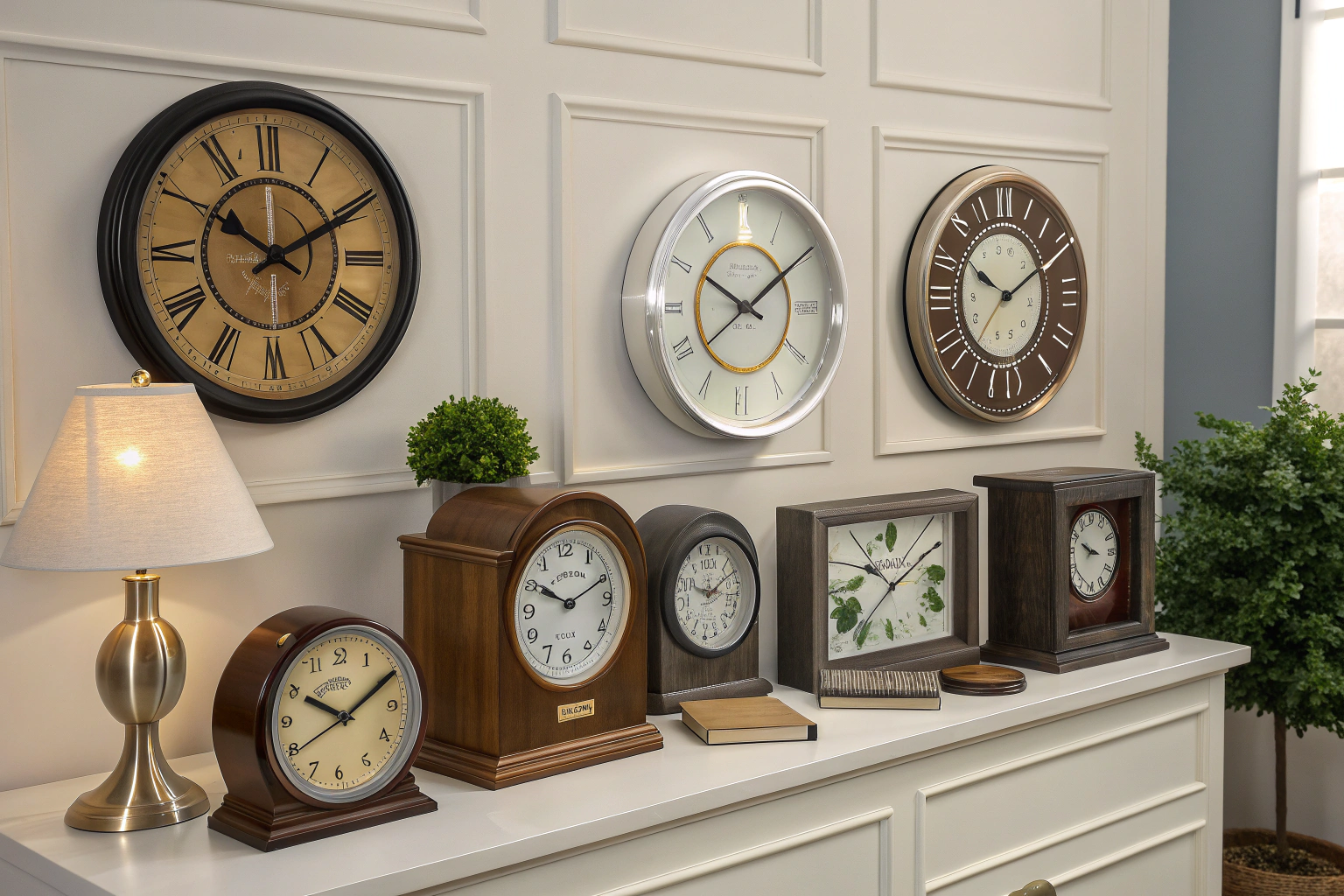
Creating Visual Rhythm Throughout Your Space
Large rooms can benefit from multiple timepiece placement that creates visual rhythm throughout the space. Primary and secondary clock positioning establishes hierarchical relationships that guide eye movement and create cohesive design flow.
Think of it like composing music for your walls – the main clock provides the primary melody, while smaller timepieces add harmonious notes that support the overall composition without competing for attention.
Varied sizes, styles, and positioning heights add visual interest while maintaining functional time-telling capabilities in different room zones. This approach works particularly well in open-concept layouts where multiple activity areas require time awareness.
Coordinated Design Themes
Multiple clocks should share common design elements like materials, colors, or stylistic periods to maintain visual unity. These connecting factors prevent the space from appearing cluttered or disorganized despite featuring several timepieces.
Consider a copper finish theme that ties together different-sized clocks, or a vintage aesthetic that unifies various antique timepieces from the same historical period. These threads create intentional design narratives rather than random collections.
Spacing considerations become critical when incorporating multiple clocks within the same visual field. Adequate separation prevents competition while ensuring each piece contributes meaningfully to the overall design composition.
What Installation Techniques Guarantee Success?
Professional Hardware Selection
Wall type and timepiece weight determine appropriate hanging hardware choices. Drywall anchors, wall studs, or masonry fasteners each require different installation approaches for secure, long-lasting mounting solutions.
Professional installation may be advisable for heavy or valuable timepieces, particularly those requiring electrical connections or complex mounting systems. This investment protects both the clock and wall surfaces from potential damage while ensuring optimal positioning.
Measurement and Marking Precision
Accurate measurement and marking procedures prevent costly installation mistakes that require wall repairs and repositioning efforts. Level tools and measuring tapes ensure precise positioning before creating permanent mounting holes in wall surfaces.
Template creation using paper or cardboard allows position testing without wall damage. This preview technique helps visualize the final result and enables adjustments before committing to permanent installation – a simple step that prevents major headaches.
Also Read: Wall Diwali Decoration Ideas for Office: DIY & Simple Tips
Frequently Asked Questions
Where is the best location to hang a wall clock in living room?
The optimal location is above the sofa, positioned 6-8 inches from the furniture’s top edge. This central placement creates a natural focal point while ensuring easy visibility from multiple seating positions throughout the room without overwhelming the space.
How high should wall clocks be positioned for best results?
Wall clocks should be hung 57-60 inches from floor level to the timepiece’s center. This standard height accommodates both seated and standing viewing while following professional design guidelines that create visually balanced, comfortable room arrangements.
Can multiple clocks work effectively in one living room?
Multiple clocks work beautifully in larger spaces when positioned thoughtfully. Place one primary statement piece centrally, then add smaller accent clocks in secondary areas to create visual rhythm and functional time awareness without overwhelming the design scheme.
What size clock works best for standard living rooms?
For above-sofa placement, select clocks spanning approximately two-thirds of the furniture’s width. In general, 12-24 inch diameter clocks suit most standard-sized rooms without appearing disproportionate to available wall space or competing furniture elements.
How does lighting affect clock placement decisions?
Natural and artificial lighting significantly impact both visibility and aesthetic appeal. Avoid positions where direct sunlight creates reading glare, and consider how evening lighting affects the timepiece’s appearance and functionality throughout different times of day.
What feng shui principles should guide clock positioning?
Feng shui recommends positioning clocks on east or southeast walls, facing inward toward the home’s interior rather than toward exits. Avoid placement directly above seating areas where occupants spend extended time to prevent creating restless energy or subconscious pressure.
Ready to transform your living room with the perfect timepiece? Visit Framing Hub today and discover our curated collection of wall clocks designed to complement any interior style. Plus, schedule a free design consultation with our experts who can help you find the ideal placement for maximum impact. Don’t let your space feel incomplete – find your perfect clock match at Framing Hub and create the focal point your room has been waiting for.

